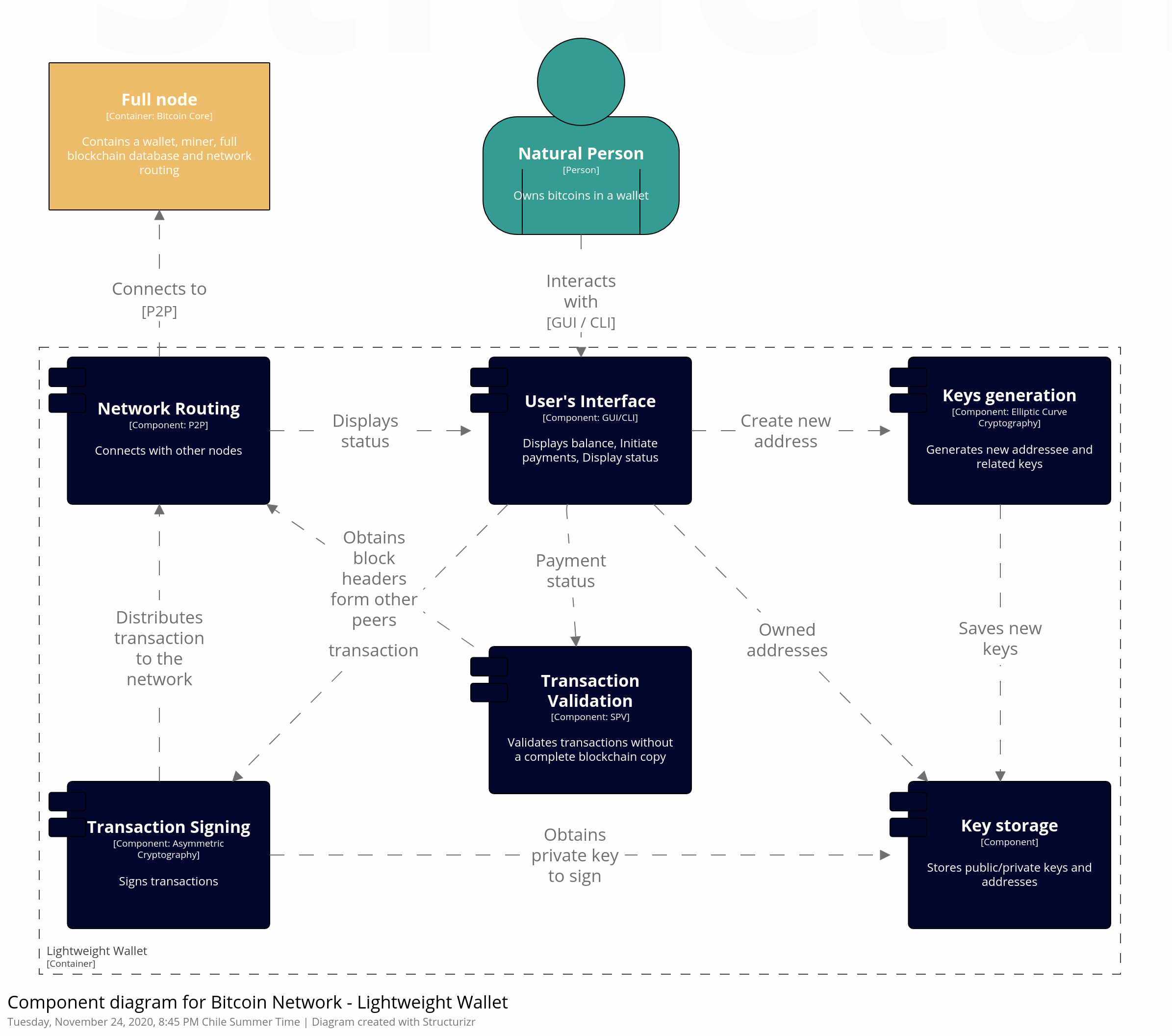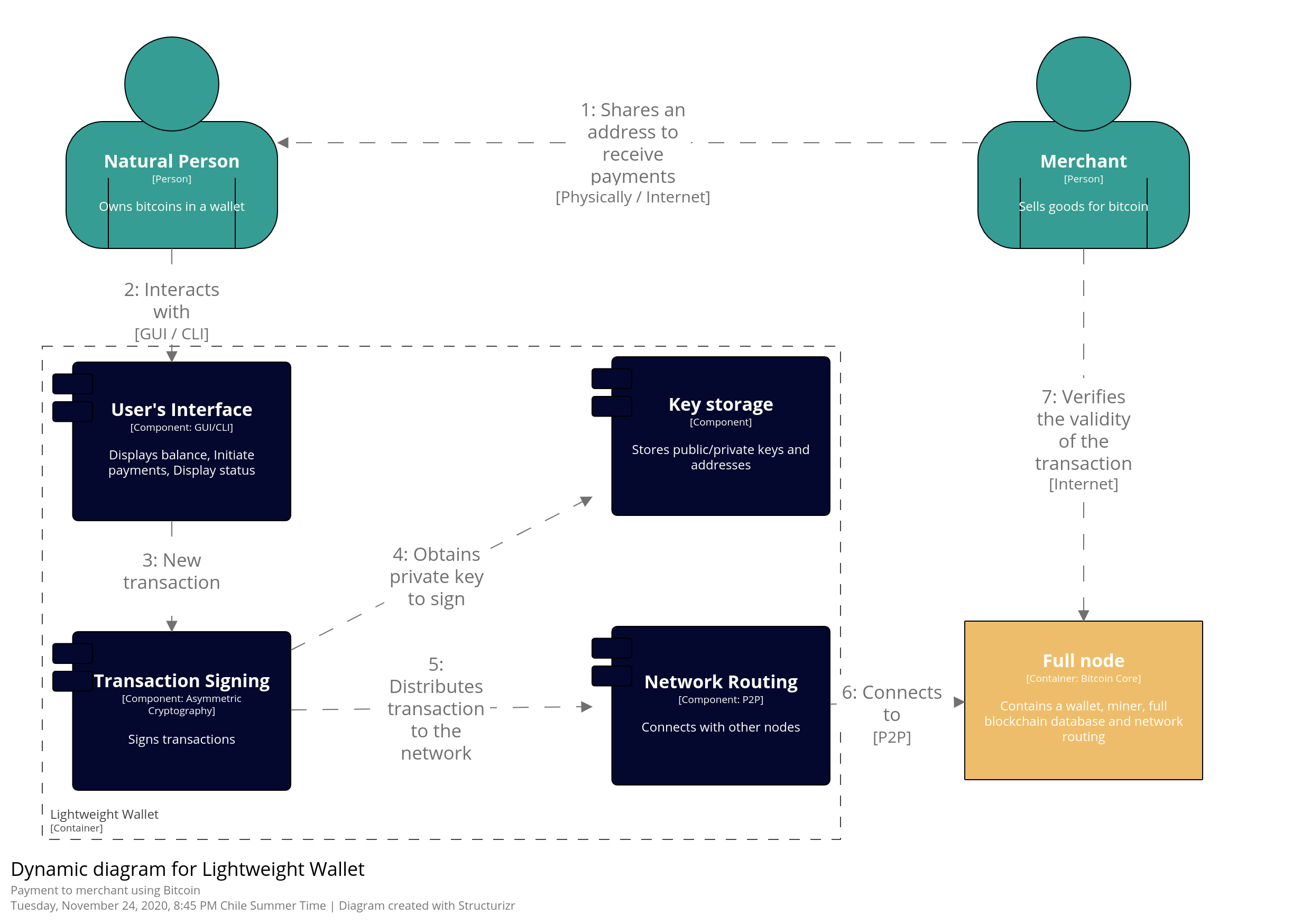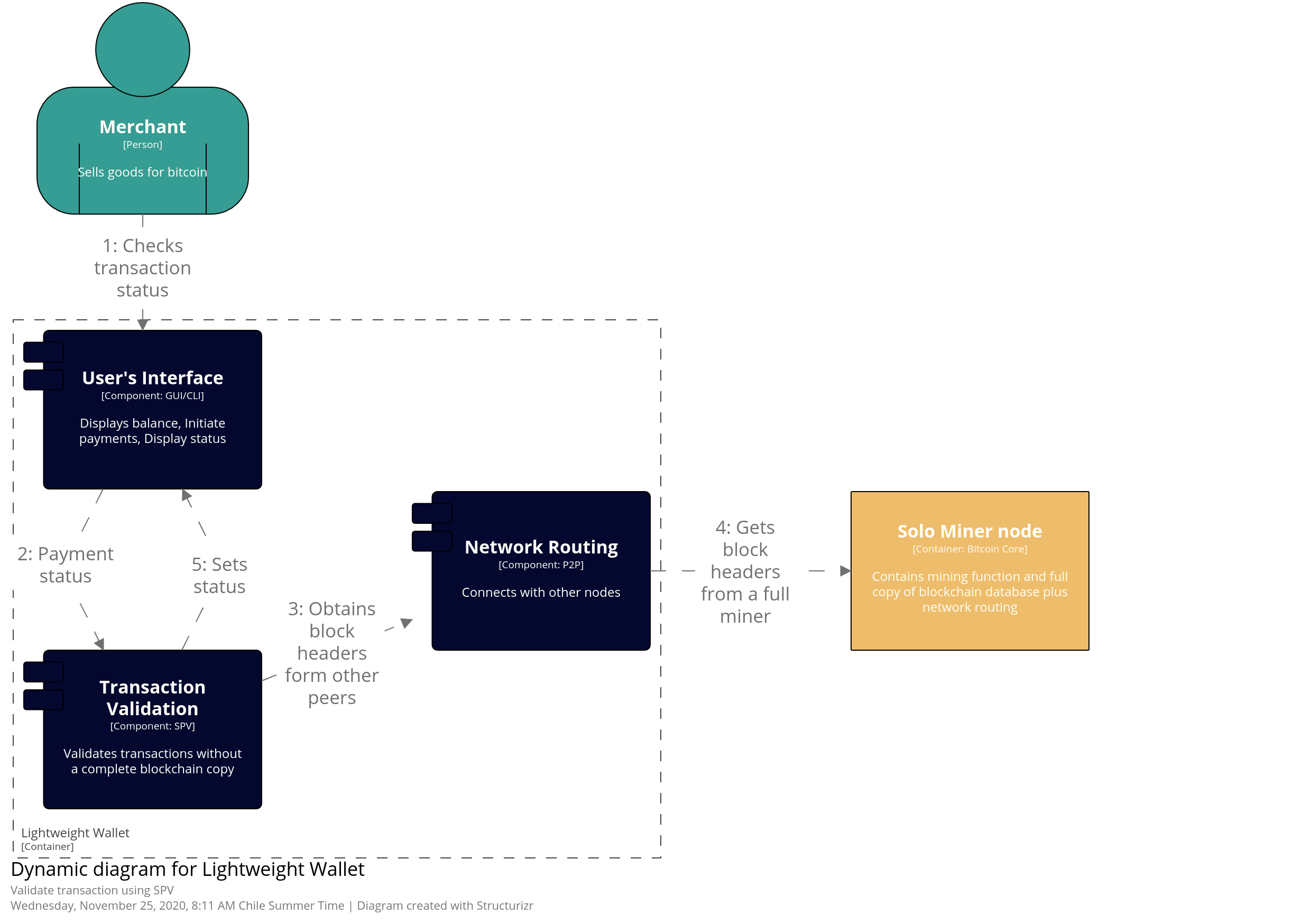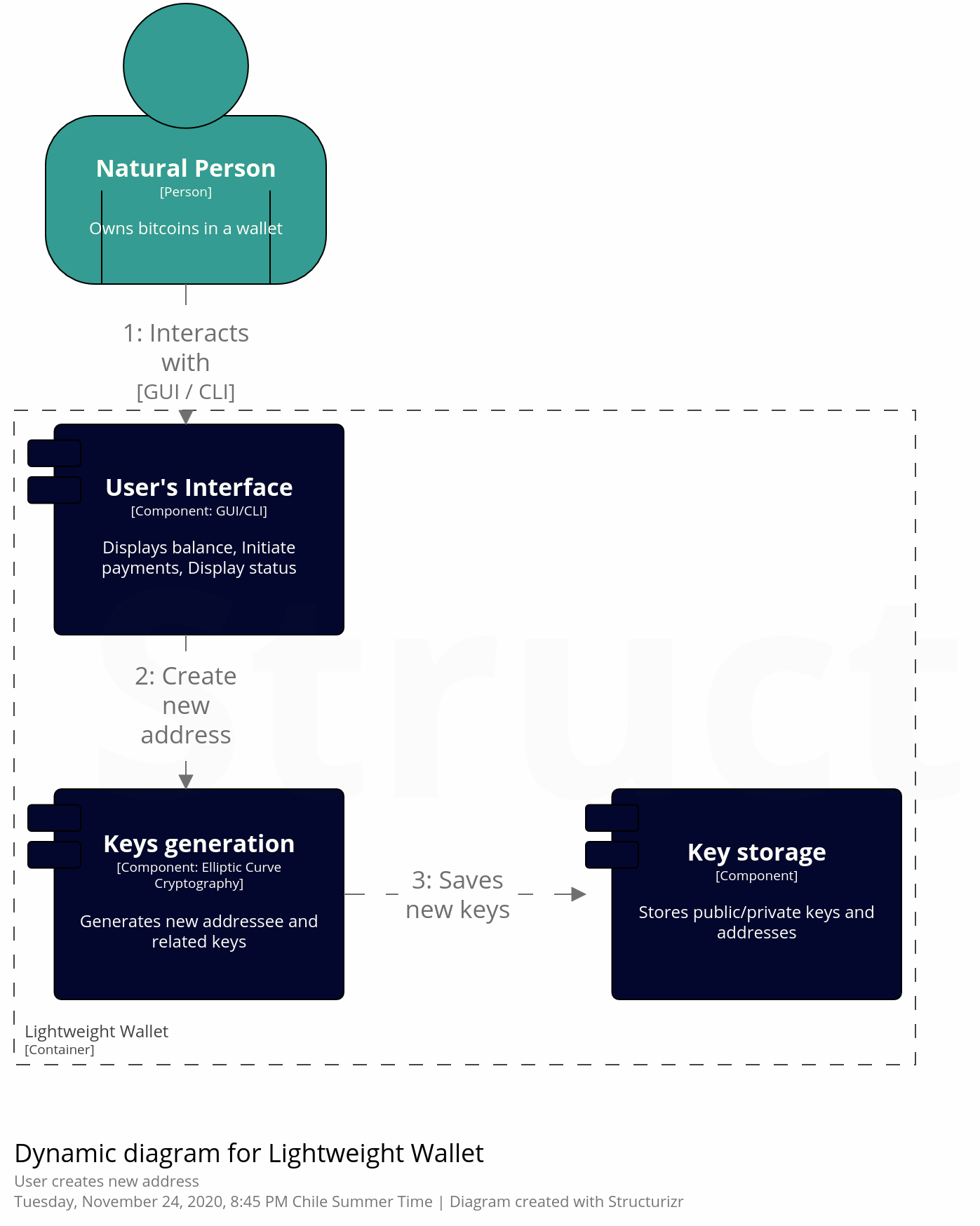Bitcoin - DeepDive
The term wallet may refer to the interface the layman user uses to track the money balance, manage keys/addresses and creating/signing transactions.
1. Component diagram - Lightweight wallet

A lightweight wallet is a Bitcoin node that doesn’t need a full copy of the blockchain to operate. Transactions are validated using the Simplified Payment Verification (SPV) method which requires only block headers to operate. This type of wallet is primary used by normal users because it can run in devices with limited resources like smartphones.
2. Workflows
Buying goods with Bitcoin

This diagram shows how a normal person can buy physical or digital goods from a merchant using Bitcoin, using a lightweight wallet.
For example, someone can buy a latte from a coffee shop and choose to pay in bitcoins. In that case, the merchant gives the customer a Bitcoin address. The customer uses his android wallet software to sign a transaction with the correct amount (plus a fee) and the shop’s owner address as receiver. The process of signing requires the private key related to the origin address. When the transaction is built it is broadcasted to other peers in the network. Finally, the merchant can check if the transaction is part of the blockchain and give the customer its latte, before it could get cold.
Verifying the validity of a transaction

This diagram displays how a user can check if a transaction was done and if it’s valid, using a lightweight wallet.
In the context of the previous example, after the customer makes the payment, the shop owner opens its wallet and checks if a new transaction was done. The wallet uses SPV. The transaction validation component obtains a subset of the blockchain as block headers to validate that the transaction in hand is “buried” into the blockchain, meaning that the transaction was validated and was added to the Bitcoin’s ledger.
Creating a new address

This diagram shows how a new address is created in a wallet.